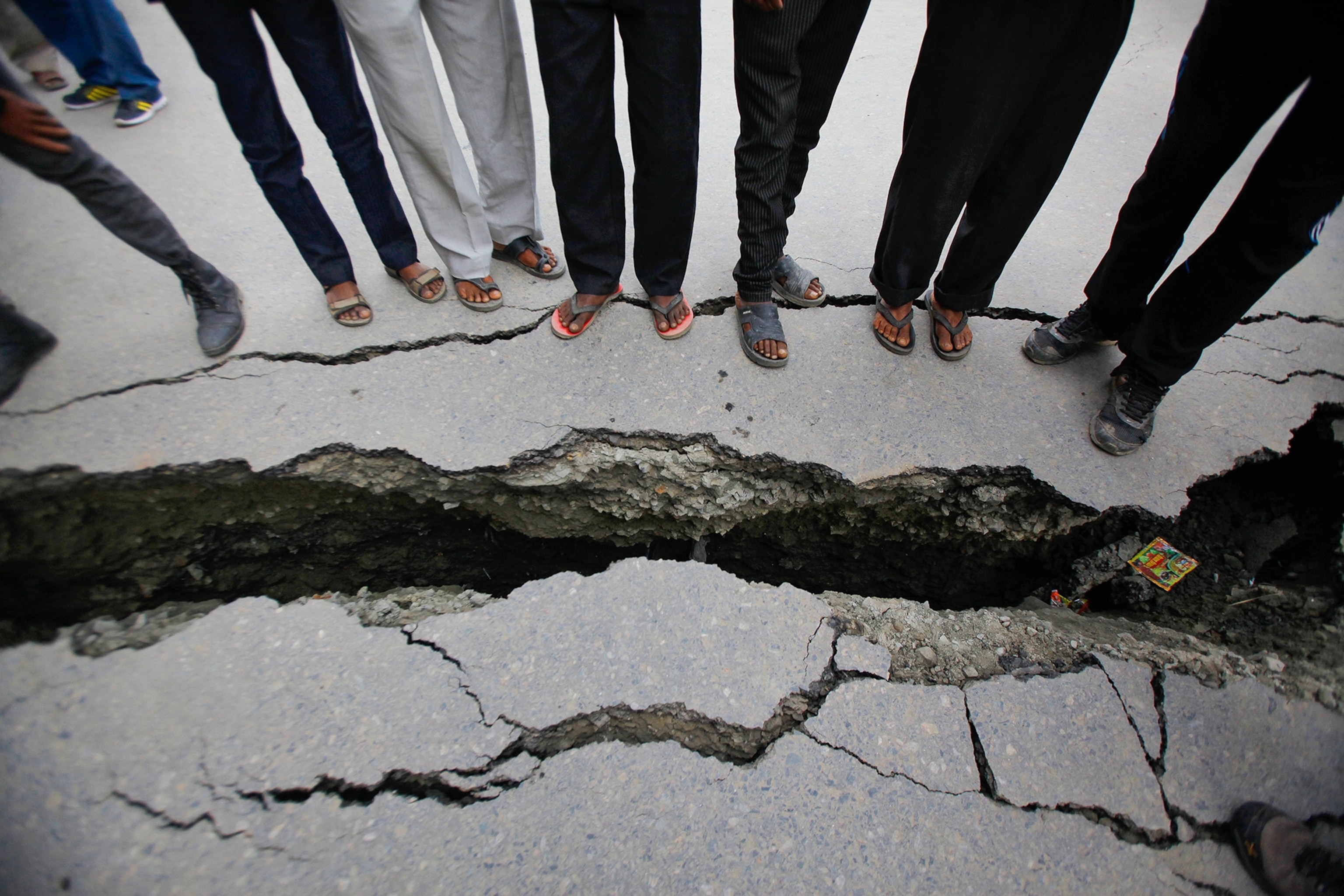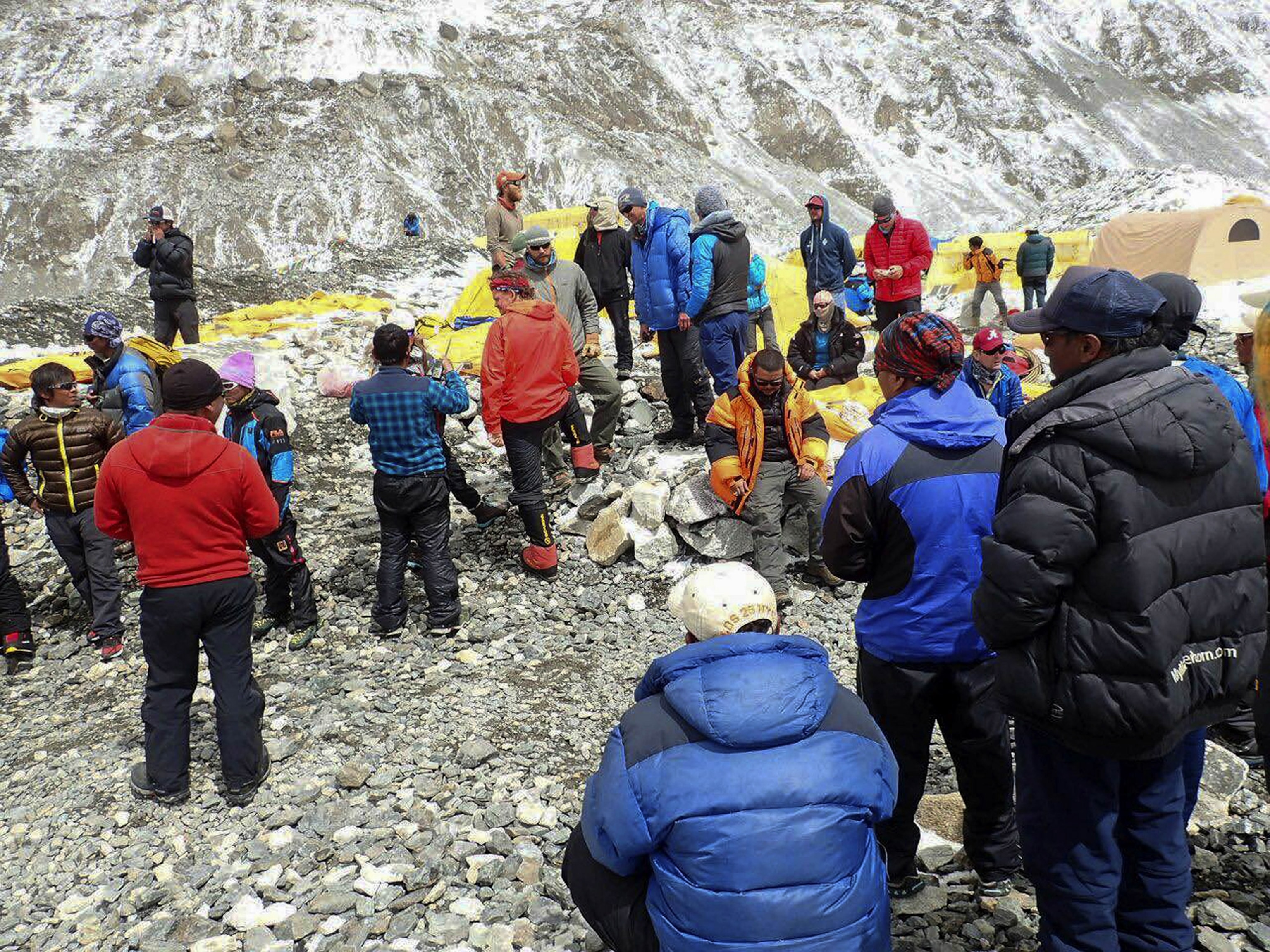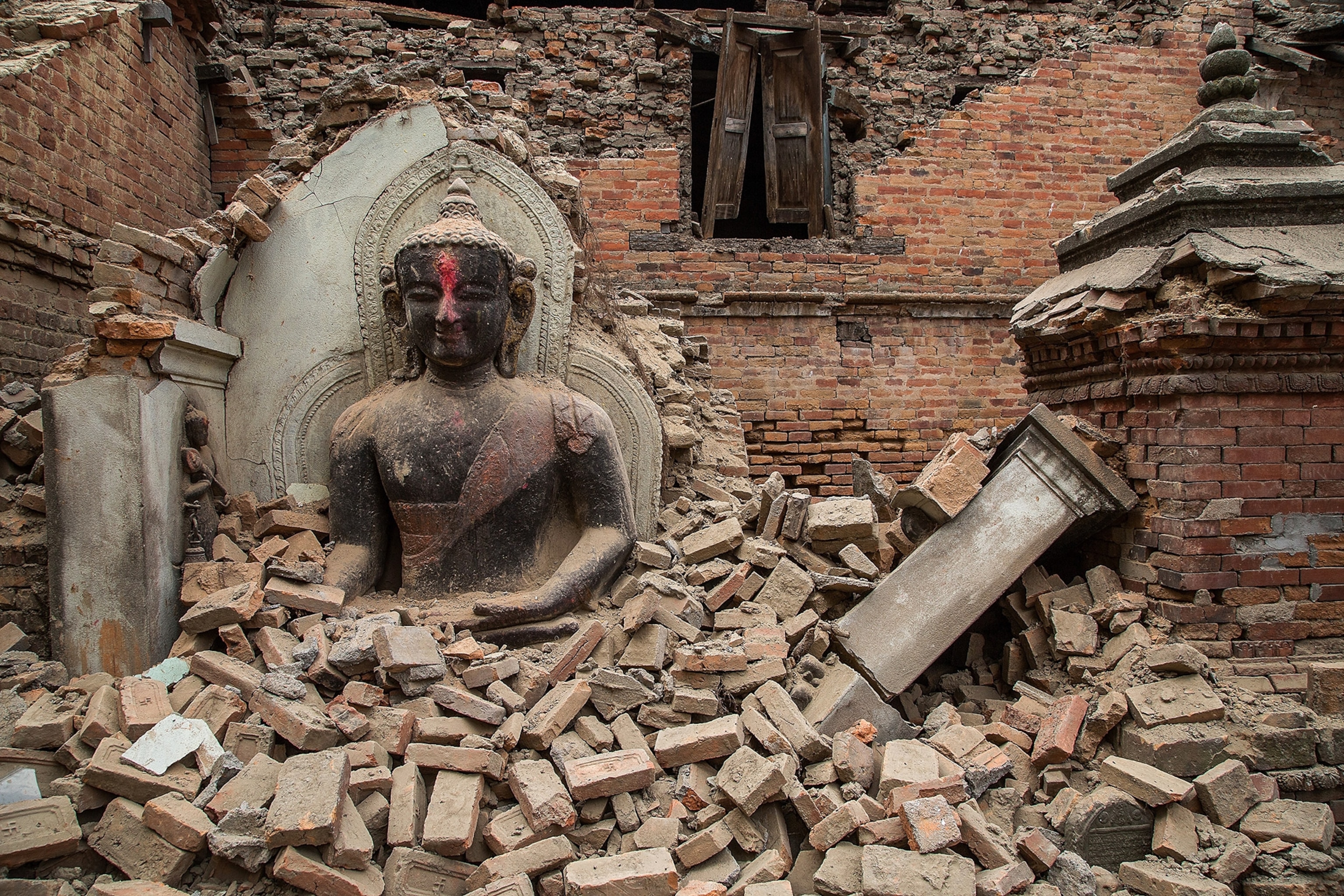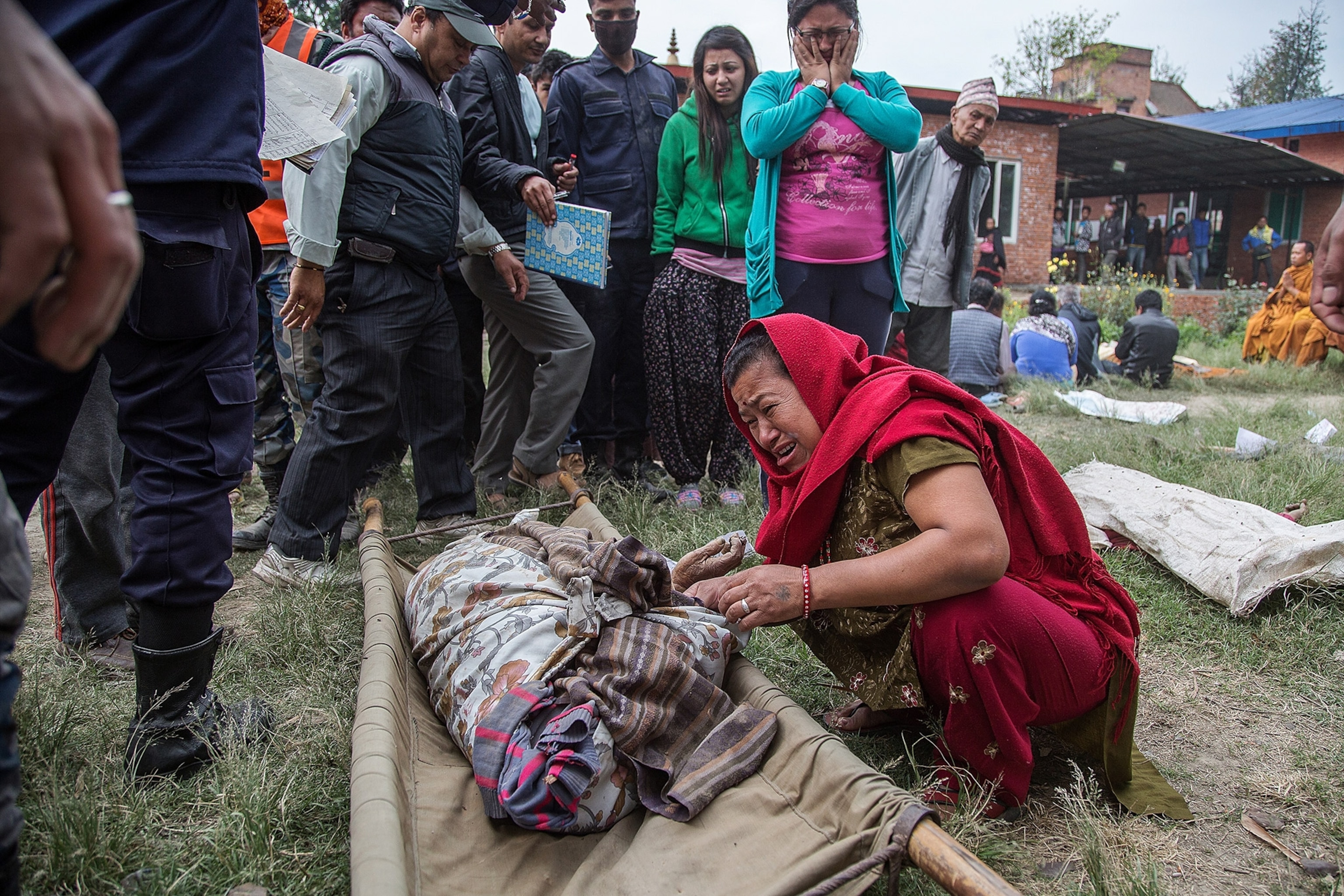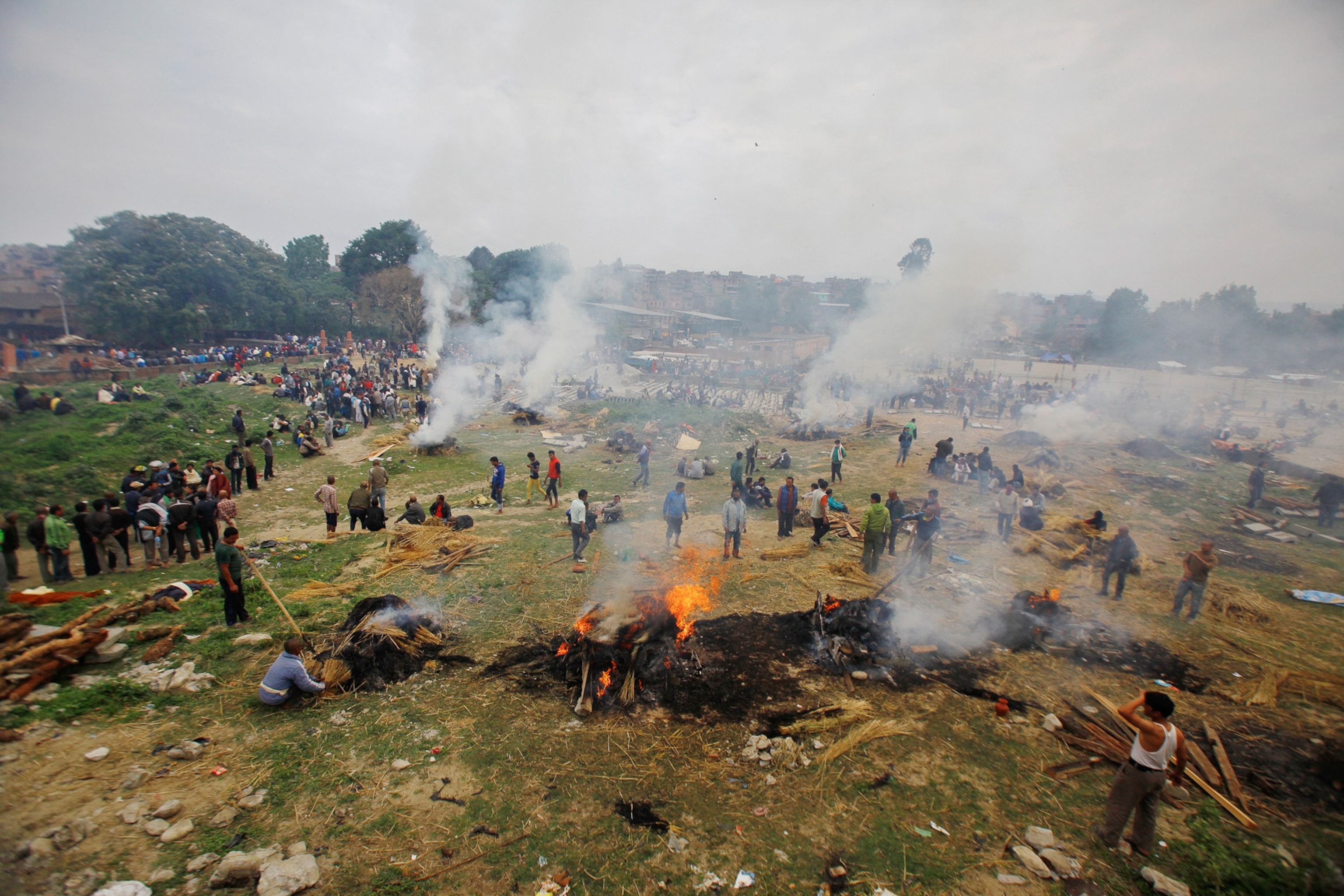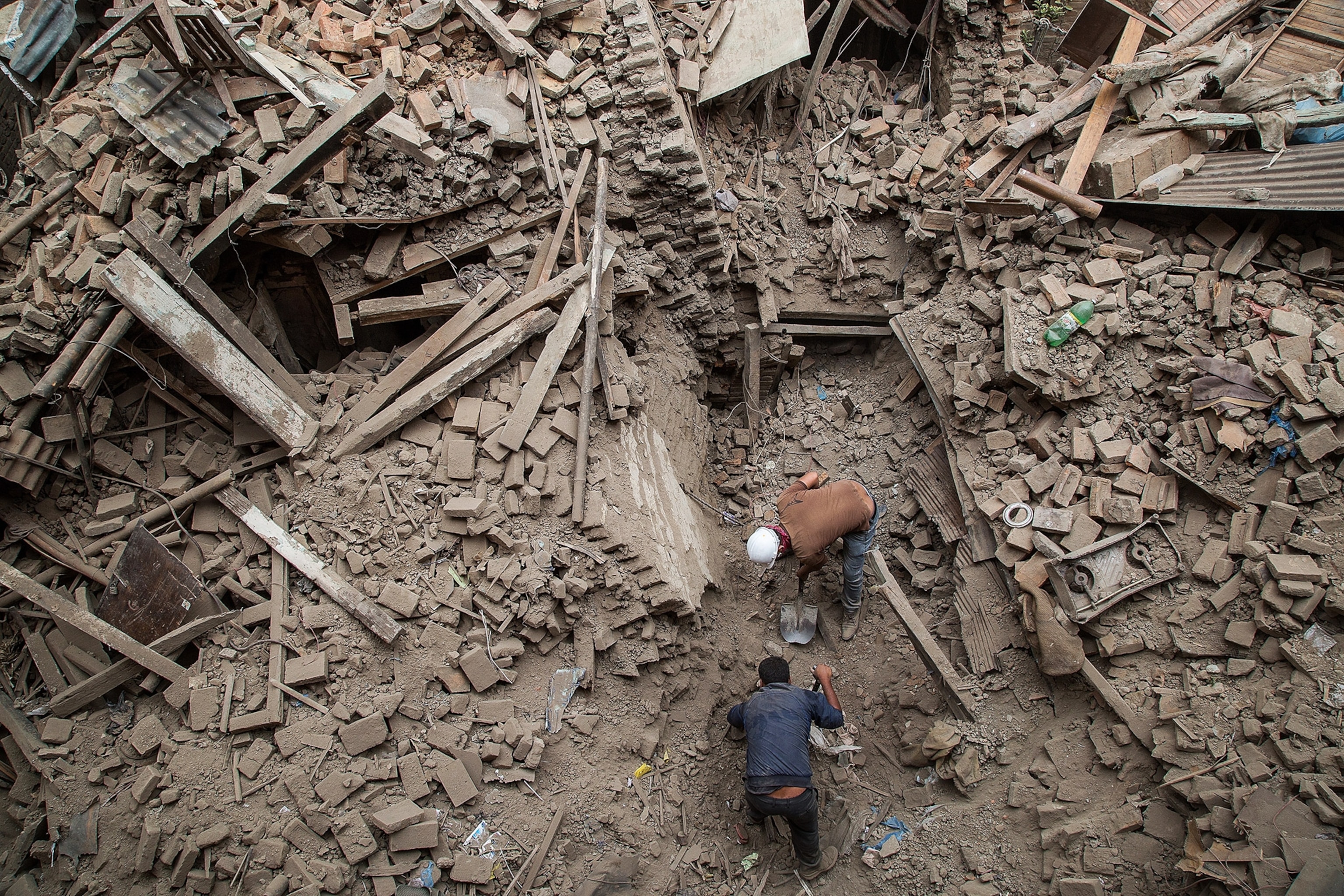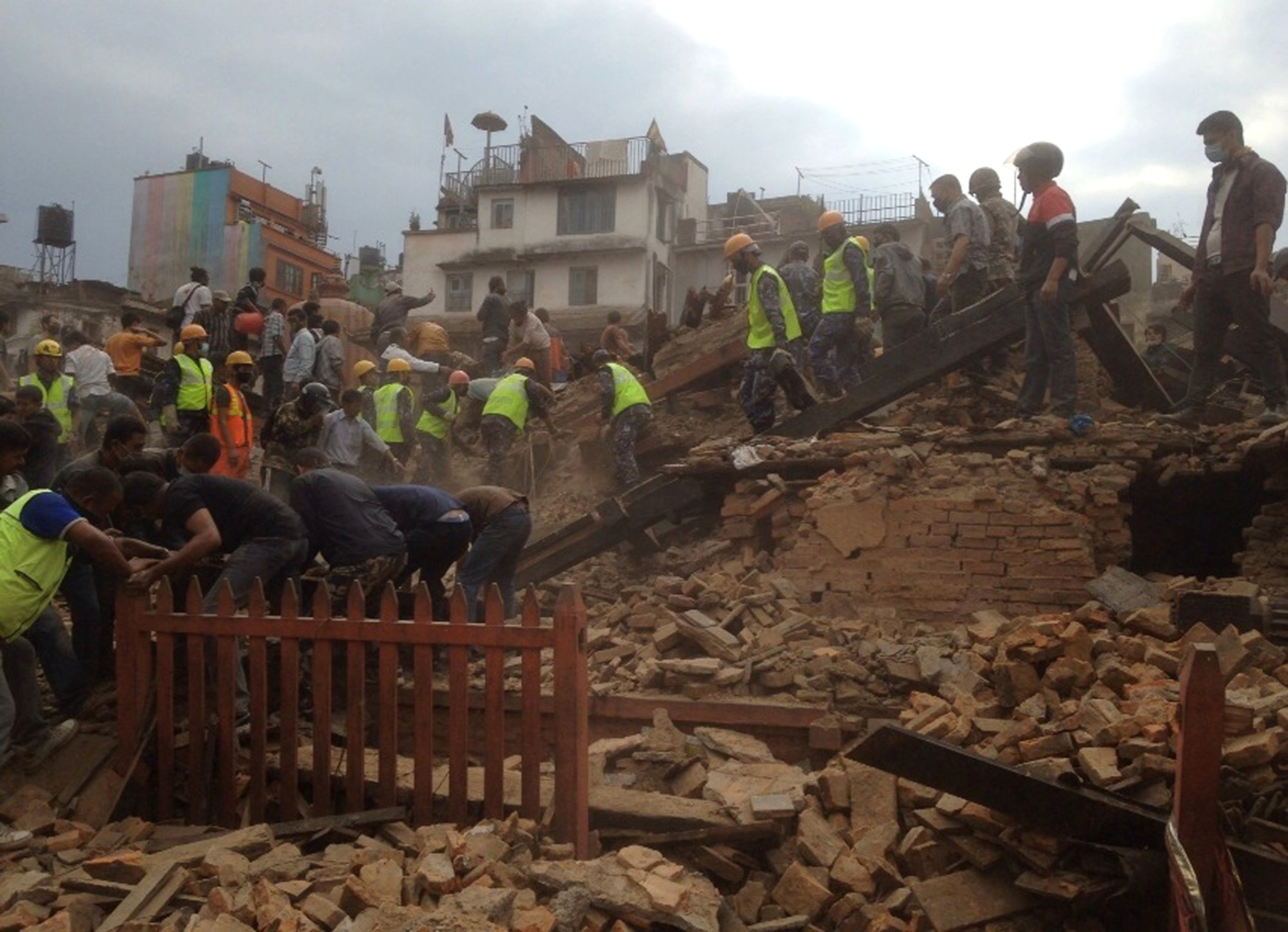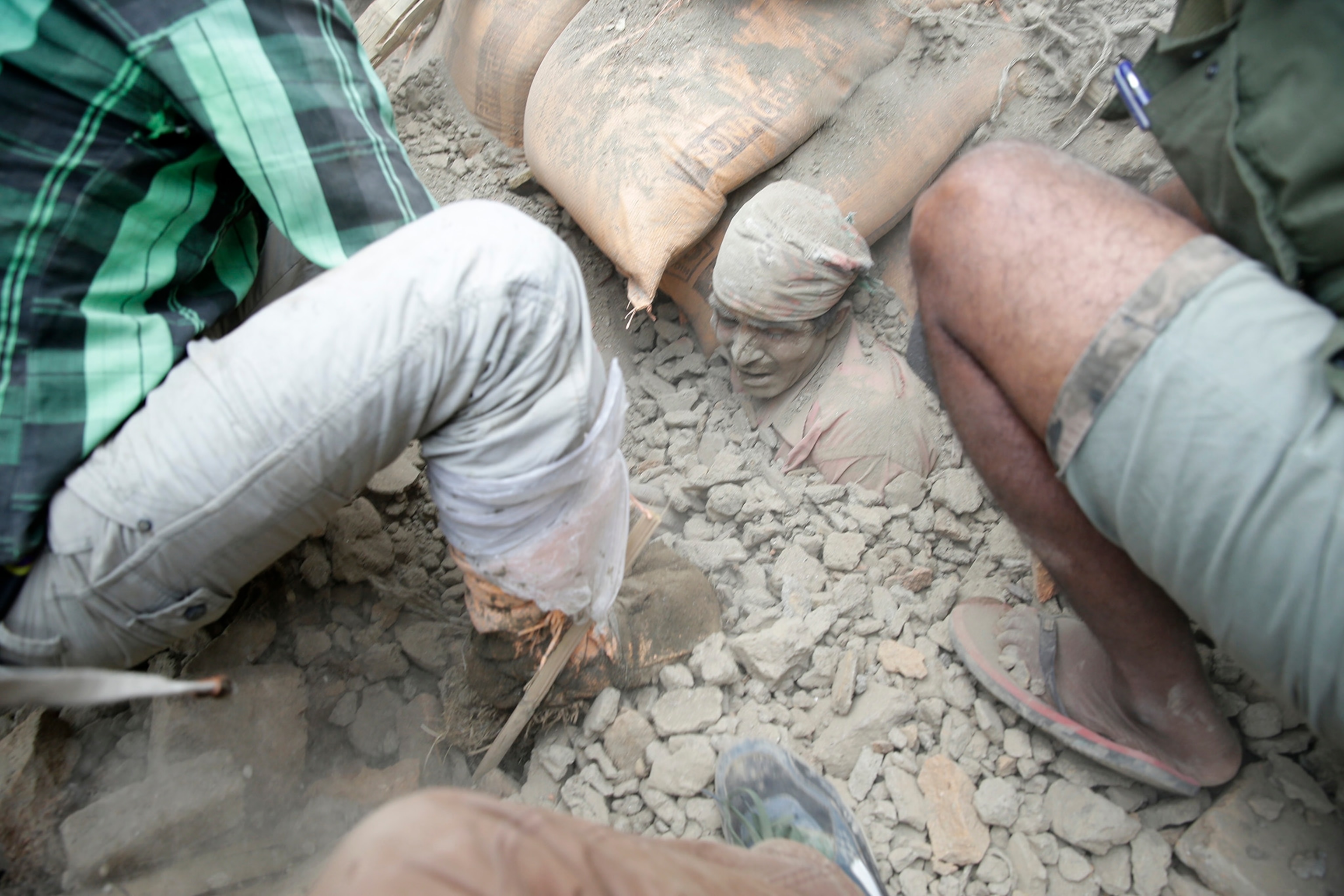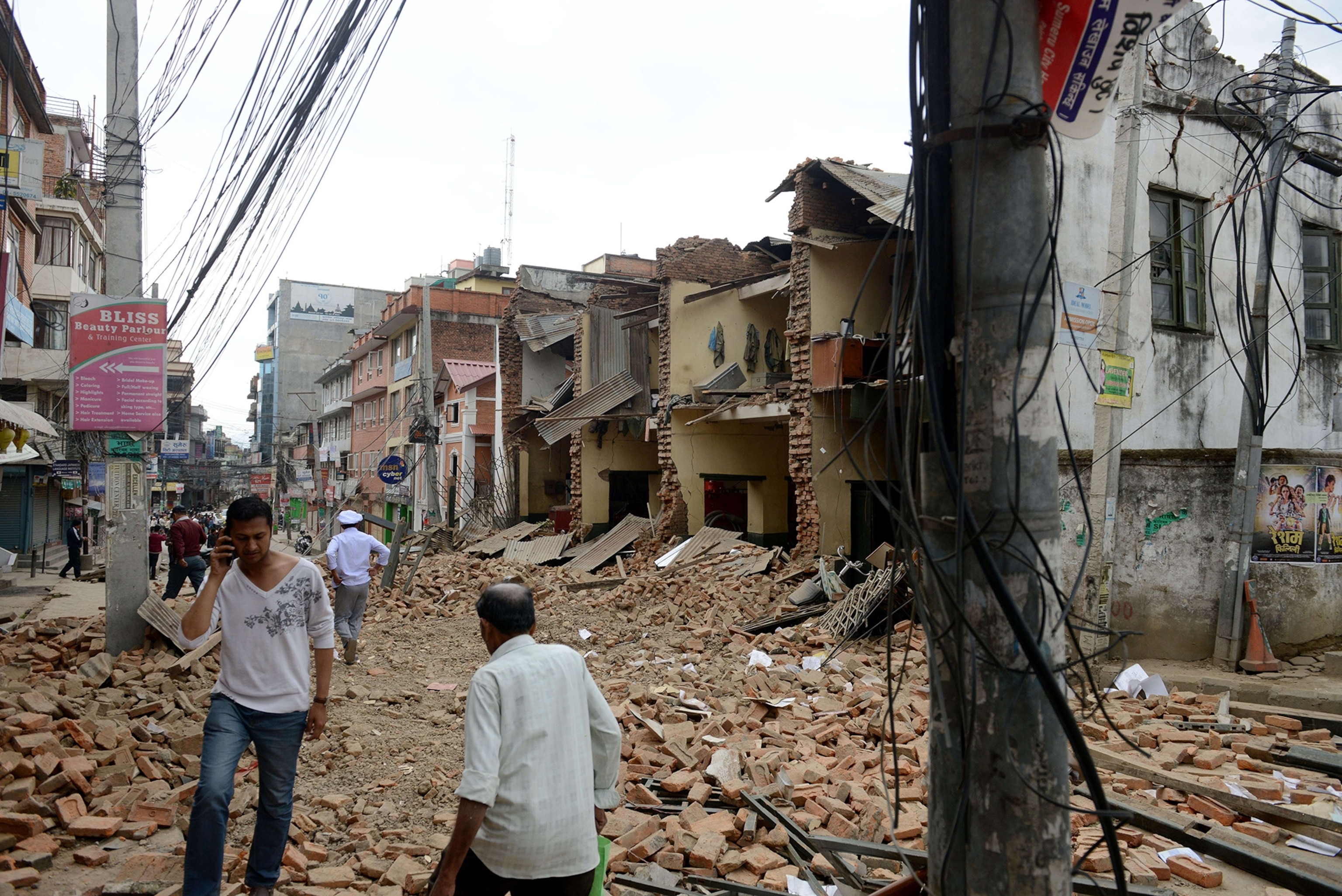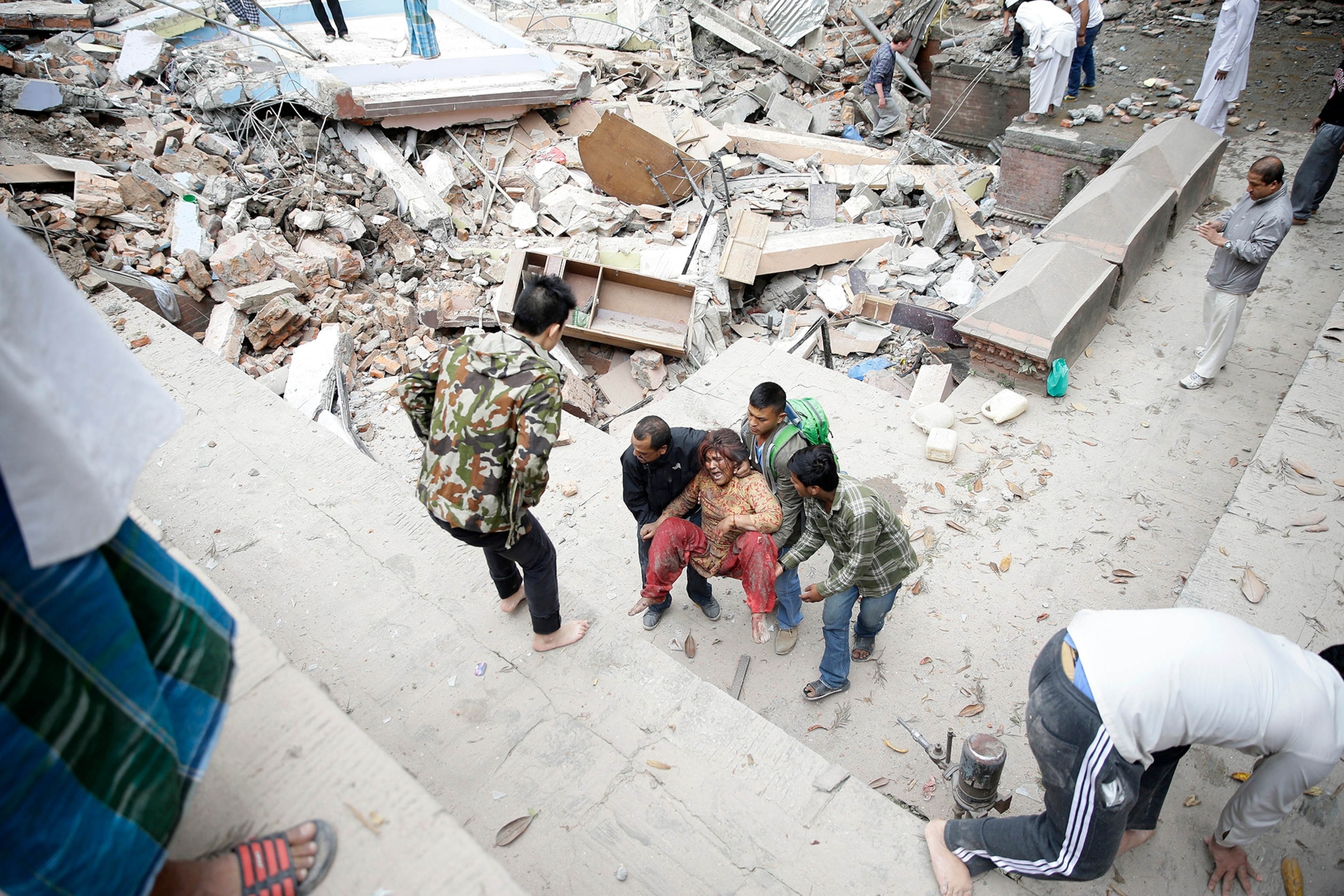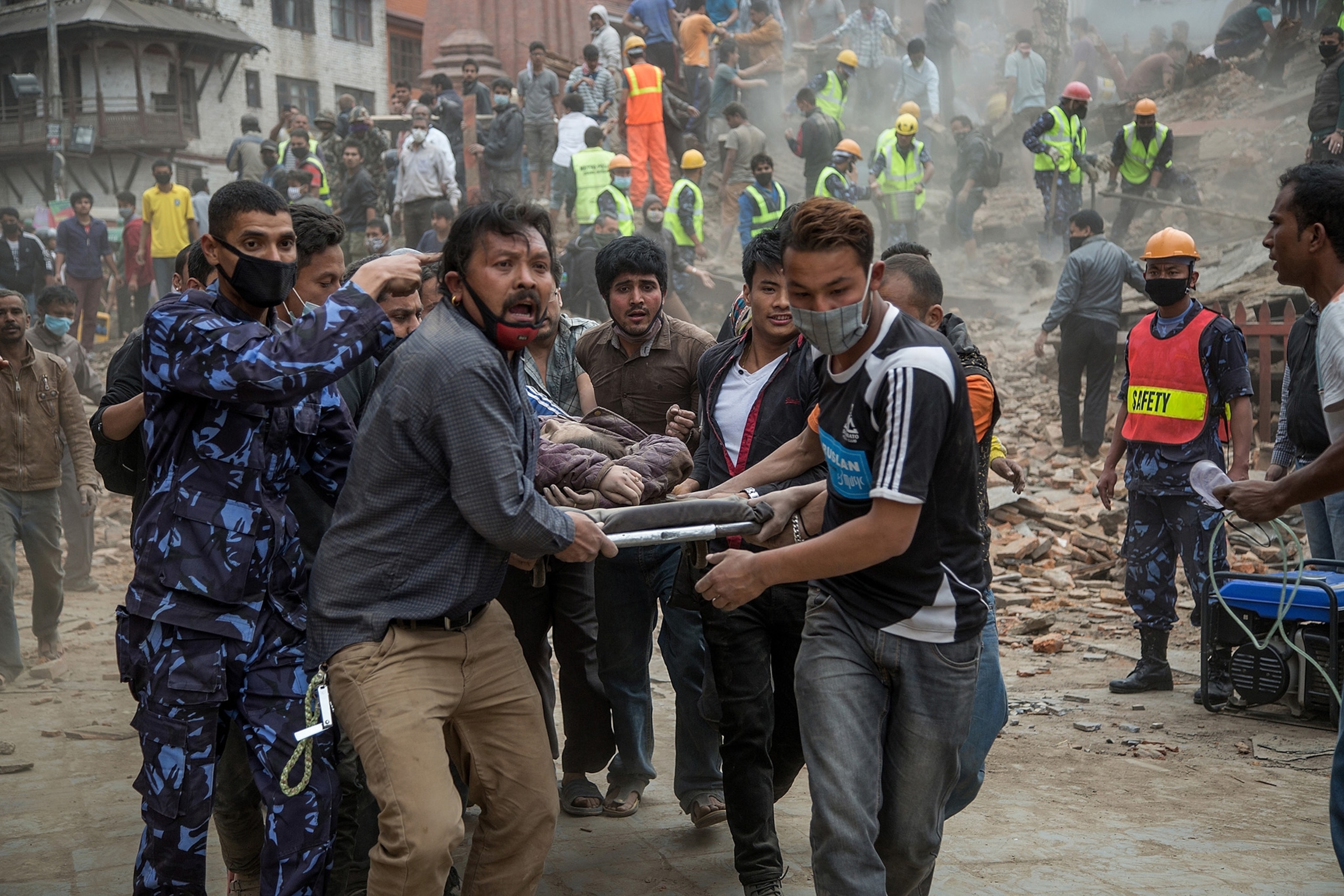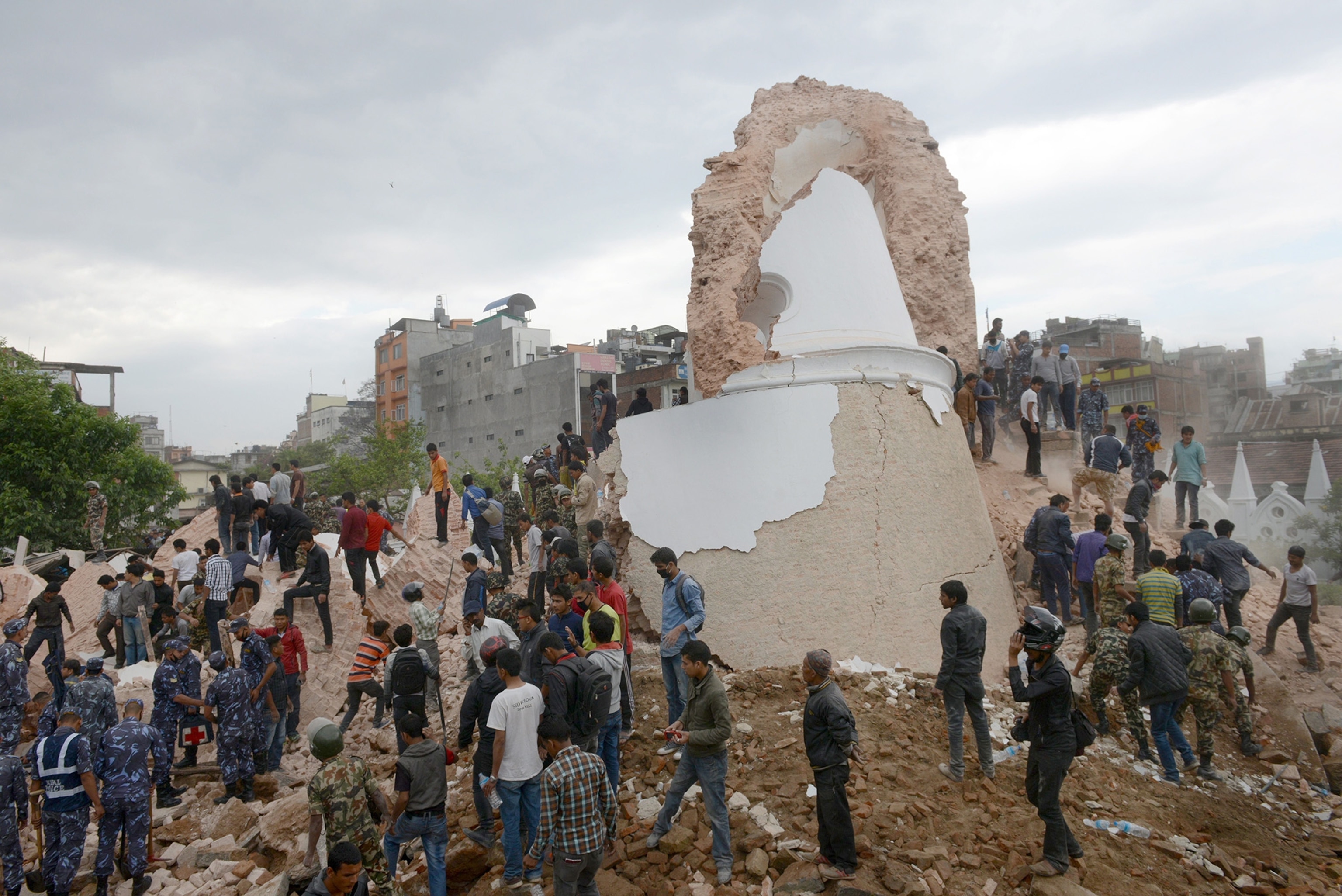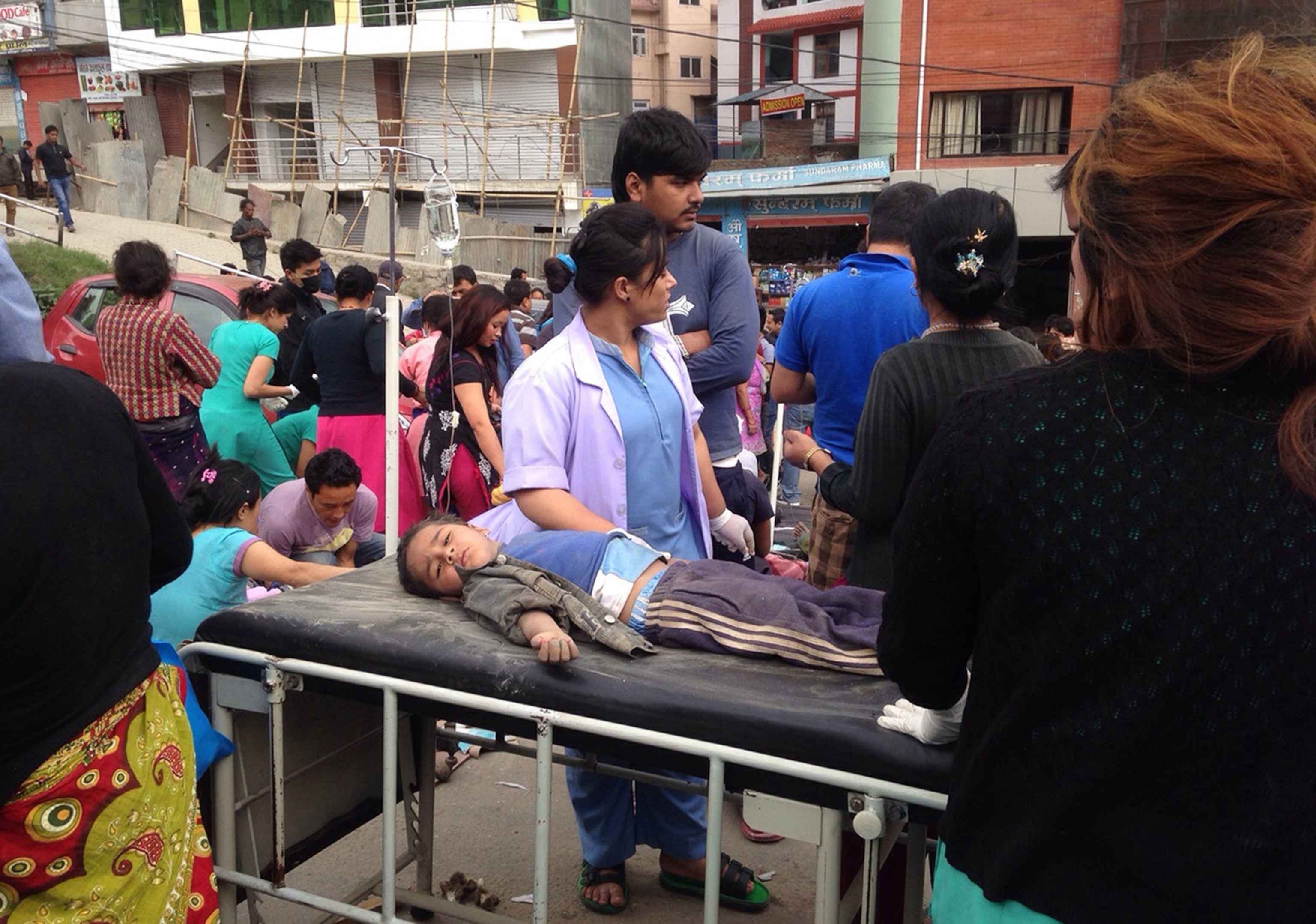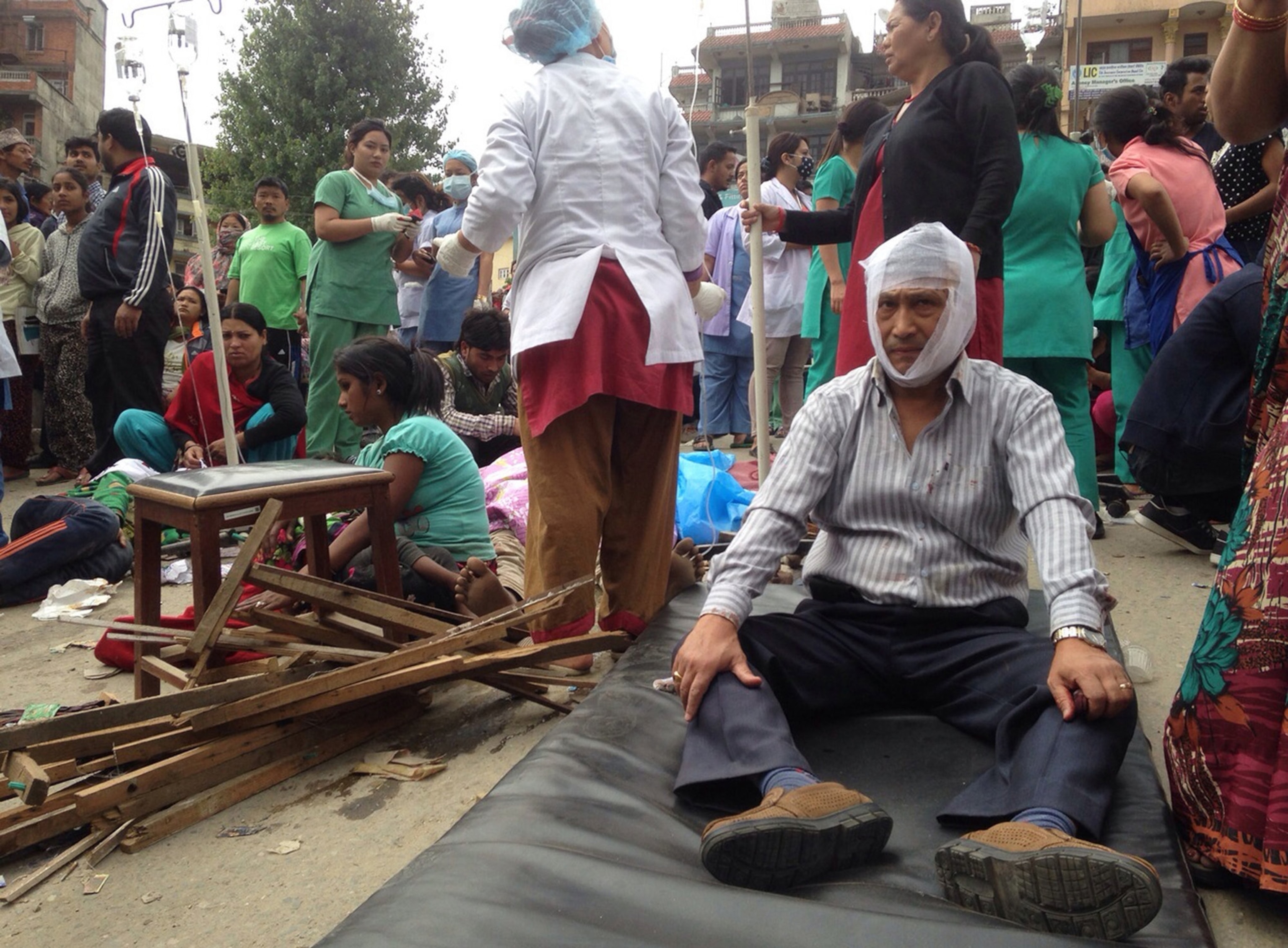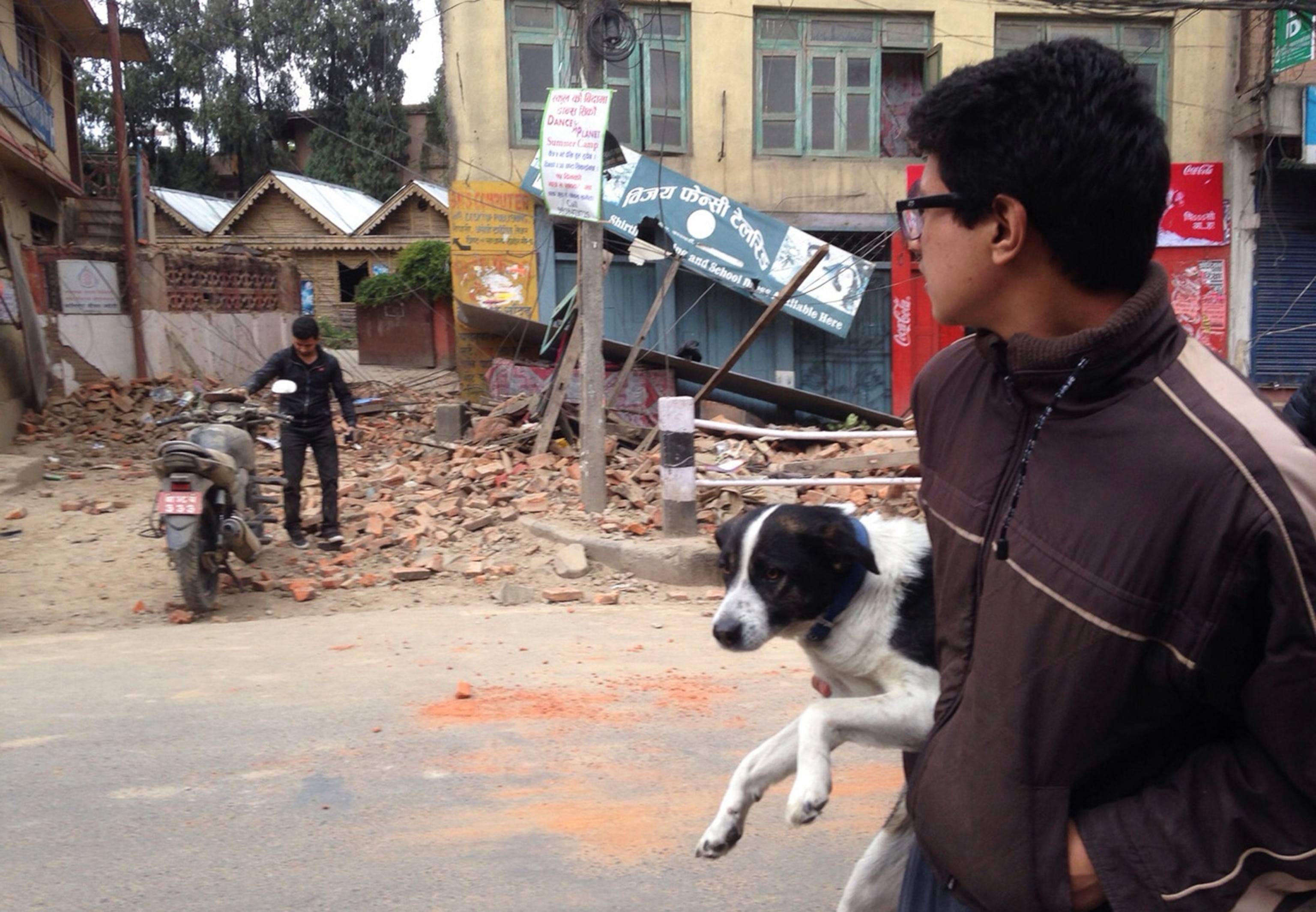
Nepal Earthquake Strikes One of Earth's Most Quake-Prone Areas
Magnitude 7.8 temblor comes in a region with a long geologic history of big earthquakes.
Updated 11:00 a.m ET April 29.
A strong, magnitude 7.8 earthquake rocked Nepal early Saturday, destroying buildings, damaging historic temples, and killing thousands. As search and rescue efforts continue, scientists say a major quake has long been expected in the region.
The region has seen four quakes above magnitude 6 in the past century, and has a long history of big earthquakes, reports the U.S. Geological Survey (USGS).
Kathmandu sits in "one of the most seismically hazardous regions on Earth,” the agency reports.
See photographs showing the extent of damage. (Warning: some photographs contain graphic material.)
A magnitude 6.8 earthquake in August 1988 killed nearly 1,500 people. An 8.1 event in 1934 severely damaged Kathmandu, killing 10,600. The largest quake in the region measured by instruments was a magnitude 8.6 event in 1950, centered in Assam in eastern India.
Saturday's earthquake was centered 48 miles (77 kilometers) northwest of Nepal’s capital of Kathmandu, a city of 1 million. At least 5,000 people have been declared dead, mostly in Nepal, with additional victims in India and China. Thousands more were injured.
(20 Pictures Reveal Nepal's Heartbreaking Earthquake Devastation)
The temblor was caused by a sudden thrust, or release of built-up tension, along the major fault line where the plate carrying India is slowly diving underneath the one carrying much of Europe and Asia, according to the USGS.
The earthquake struck at 11:41 a.m. local time (05:51 GMT) at an estimated depth of 9.3 miles (15 kilometers), which is considered shallow and therefore more damaging than quakes that originate deeper in the ground.
Avalanches were also reported on Mount Everest as a result of the shaking, sending climbers running and reportedly killing at least 18 at base camp.
Climber Arjun Vajpai posted a video on Facebook reporting avalanches at his site at Mount Makalu, southeast of Mount Everest:
After the main quake, some 14 aftershocks were felt by local people. Some were strong enough to cause more damage, up to a magnitude 6.6, reports the UN Office for the Coordination of Humanitarian Affairs.
The two massive plates are colliding at a rate of about 1.7 inches (45 millimeters) a year, pushing up the Himalaya mountain range in the process. But due to friction along the plate boundaries, the sliding is not smooth or even. Some of the rocks stick, causing pressure to build. When the rocks finally give way under the strain, the plates jerk rapidly, releasing the energy that causes an earthquake. (Learn more about how earthquakes form.)
Both shallow and deep earthquakes have been observed in the region, thanks to its high level of geologic activity.

